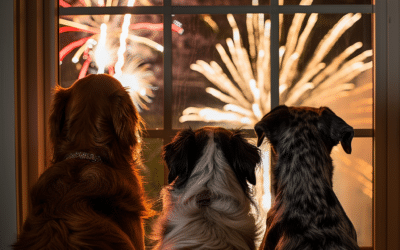How to Keep Your Dog Safe Around Wildlife
With the hot summer fading and the temps starting to cool down a bit, chances are you’ll be wanting to hit the great outdoors with your dog. With cooler temps, it could mean the emergence of wild animals that live in your region so it’s important to ensure that your dog is safe when enjoying the great outdoor. We’ve provided some tips for how to keep your dog safe around wildlife this season.
Always Leash Your Dog
Whether you’re out in nature or just taking a walk around the neighborhood, it is always a good idea to keep your dog on a leash. Keeping your dog on a short, strong leash during walks or hikes keeps your dog on the intended path instead of chasing birds or squirrels. There are lots of predators living in the woods, from snakes and scorpions to bears and cougars, and they’re all incredibly good at remaining unseen. Your dog’s harmless leap after an unsuspecting squirrel could lead to disaster, but keeping your dog close to you can prevent that from happening. We also highly recommend a fixed leash rather than a retractable leash. The thin rope-like cord of the retractable leash can cause severe burns, deep cuts, entanglement or strangulations. It is also much more difficult to control an out of control dog on a retractable leash.
Avoid Certain Times of Day
Wildlife tends to be more active around dusk and dawn, so if you want to take a hike or go for a walk try to go in the middle of the day. This will greatly minimize your chances of running into any predatory animals that could pose a threat to you and your pup. You’ll also have a much better time knowing that you’re relatively safe from the dangers that wildlife encounters can pose.
Keep Their Shots Up to Date
Having your dog’s vaccines up to date can be a big help in the long run in the event that you do encounter wildlife on your outdoor excursions. Tons of animals native to wooded areas, like coyotes, possums, and skunks, can carry rabies and other dangerous diseases. If you’re outdoors with your dog often, consider asking your vet about specific vaccines against disease carried by animals local to your region, adding another layer of protection against harmful diseases.
Stay on Marked Trails
Most dogs love hiking and experiencing the great outdoors with their humans, but make sure you’re handling the activity responsibly. Avoid wandering off of the marked trails to explore new areas since these environments are unpredictable and not heavily traveled by humans, if at all. This means there are not only dangers of different flora in the area, but previously undisturbed wildlife. Do yourself and your dog a favor, and stick to the areas outlined as safe by your local park or nature reserve.
Keep a First Aid Kit Handy
It can take only seconds for tragedy to happen, and if the worst-case scenario were to come to fruition having a first aid kit on hand can be a lifesaver. We recommend having a first aid kit stocked with your dog in mind. It should include things self-cling bandages, antiseptic wipes, hydrogen peroxide, and adhesive tape, just to name a few. For a detailed list of items to include in your dog’s first aid kit, check out our full post on the subject here. Keeping these items handy can be the difference between life or death until you can get your dog to a veterinarian.
These are just a few of the things you can do to keep your dog safe around wildlife this fall. If you’re concerned about how to deal with certain animals in your region, reach out to your veterinarian, local authorities, or animal control. They can provide you with information on how to deal with different species of animals that you may encounter.





Recent Comments